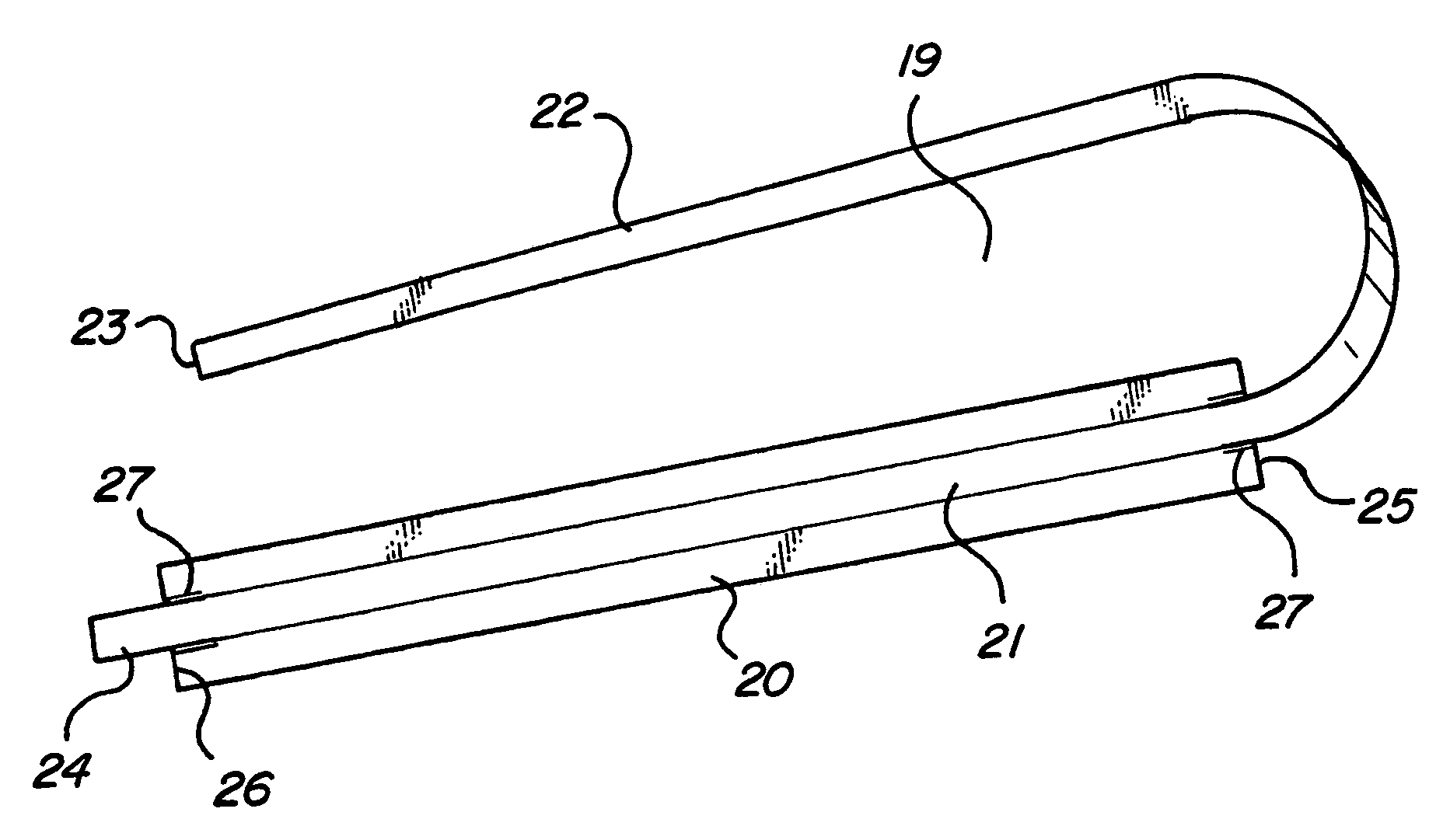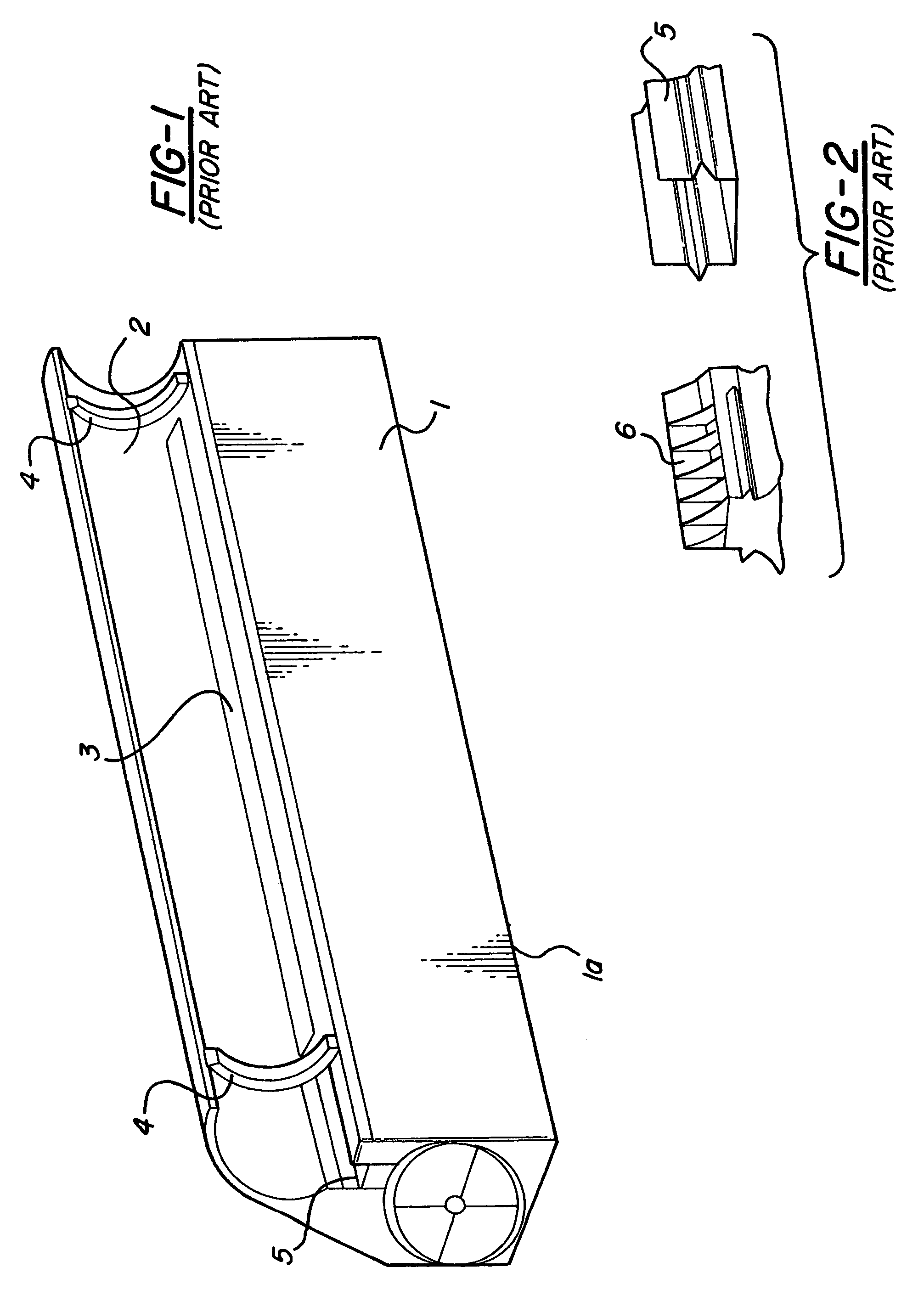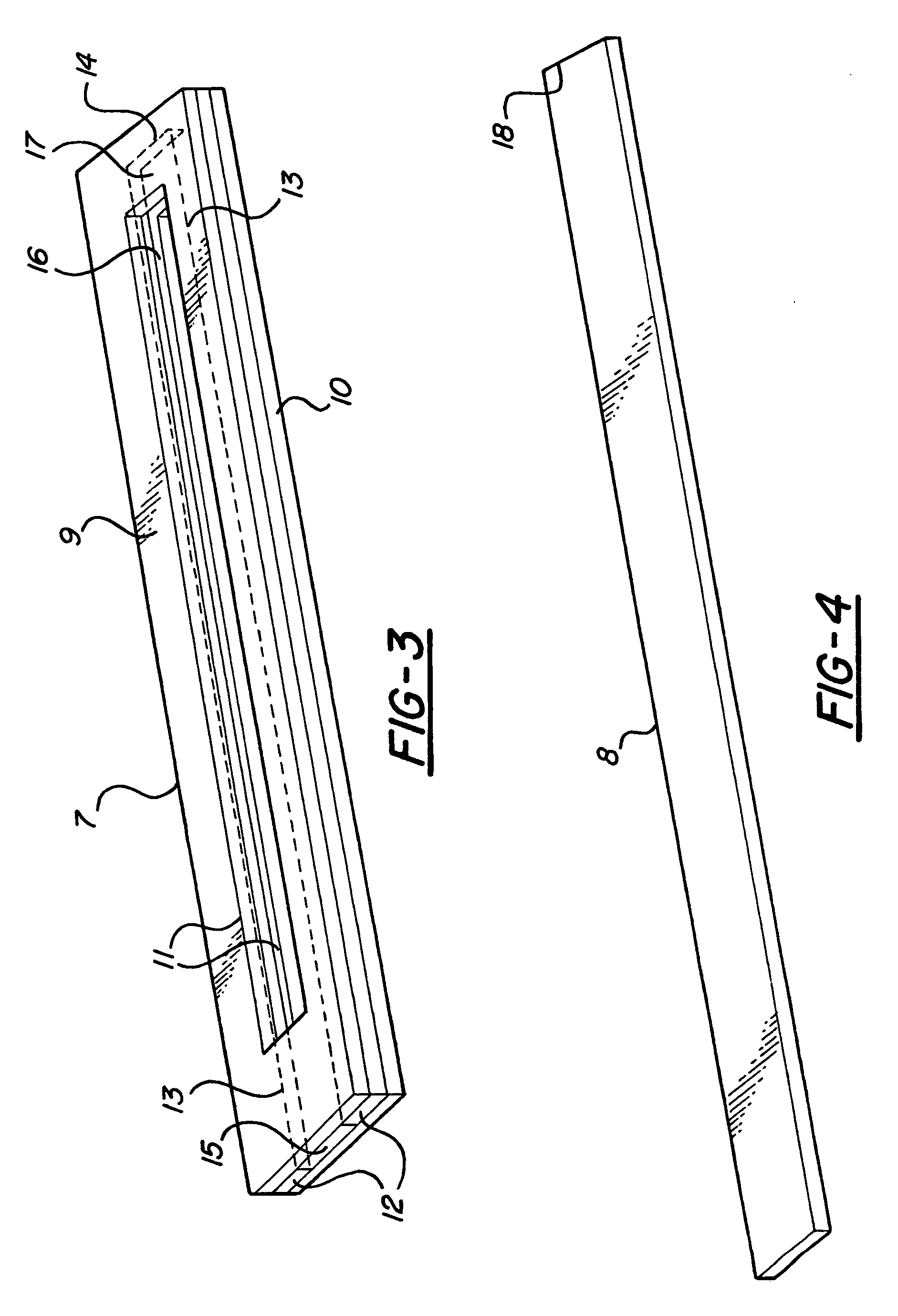Tear-strip seal and tear-seal assembly using a pre-cut tear initialization and a toner hopper, toner cartridge and image forming apparatus using same and method of manufacturing same seal, toner hopper and toner cartridge assembly
a technology of tear-seal and tear-seal assembly, which is applied in the direction of instruments, electrographic process devices, optics, etc., can solve the problems of toner blockage, achieve enhanced tear-seal, prevent toner starvation, and maintain the quality of the image produced
- Summary
- Abstract
- Description
- Claims
- Application Information
AI Technical Summary
Benefits of technology
Problems solved by technology
Method used
Image
Examples
Embodiment Construction
[0044]This section will begin with a definition of some terms used in this patent application. The purpose of this section is to try to avoid ambiguity in the meaning of any of the terms defined.
[0045]1. Image Forming Apparatus or Image Forming System or Imaging System: An image forming apparatus is any device that uses dry toner to make an image, including but not limited to a laser printer, copy machine, facsimile machine and microfiche machine. An image forming apparatus uses a dry toner to make the image.[0046]2. Toner cartridge: A toner cartridge is a device that goes into an image forming apparatus and has a photoreceptor, toner hopper and a waste toner hopper. There may be some toner cartridges where the toner hopper and waste toner hopper are connected or have interchanged components. Some toner cartridges use holding pins to attach the toner hopper to the waste toner hopper. Some older cartridges use a case to house the toner hopper and waste toner hopper and th...
PUM
 Login to View More
Login to View More Abstract
Description
Claims
Application Information
 Login to View More
Login to View More - R&D
- Intellectual Property
- Life Sciences
- Materials
- Tech Scout
- Unparalleled Data Quality
- Higher Quality Content
- 60% Fewer Hallucinations
Browse by: Latest US Patents, China's latest patents, Technical Efficacy Thesaurus, Application Domain, Technology Topic, Popular Technical Reports.
© 2025 PatSnap. All rights reserved.Legal|Privacy policy|Modern Slavery Act Transparency Statement|Sitemap|About US| Contact US: help@patsnap.com



